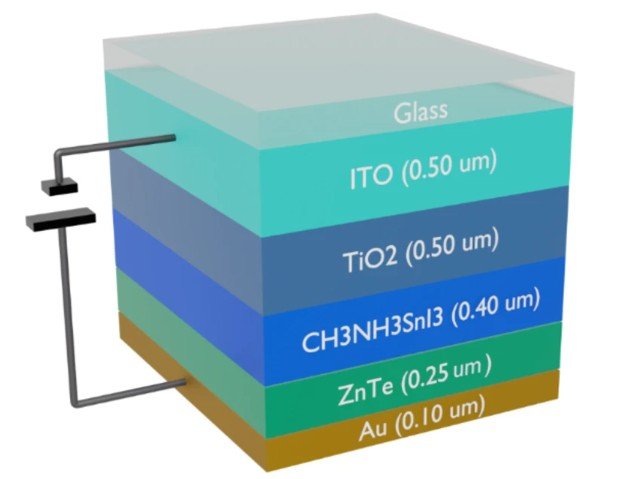Efficiency optimization of lead-free CH3NH3SnI3-based perovskite solar cells through material and structural modifications
Alsulami, Q.A., Redoy, R.A. & Wageh, S. Sci Rep 15, 13170 (2025). https://doi.org/10.1038/s41598-025-95473-1
This study focused on improving the efficiency of lead-free perovskite solar cells (PSCs) using CH₃NH₃SnI₃ as the active layer. Key advancements were achieved by replacing ZnTe with TAPC as the hole transport material, adopting an inverted p-i-n structure, and adding a thin nickel oxide (NiO) buffer layer. These strategic material choices and layer thickness optimizations led to a significant performance boost.
The final optimized device structure achieved a power conversion efficiency (PCE) of 12.37%. Crucially, this optimization process was accelerated using Fluxim’s SETFOS software, which enabled detailed simulation of optical and electrical properties. SETFOS allowed researchers to virtually explore a wide range of configurations, materials, and parameters—saving time, reducing experimental waste, and improving device design. The accuracy of the simulations was validated against experimental results, further demonstrating SETFOS as a trusted tool for advanced photovoltaic R&D.
These results highlight the potential of lead-free perovskite materials and reinforce the role of simulation in driving innovation in sustainable solar technology.

